Dial in the degrees you want, and then just drive…
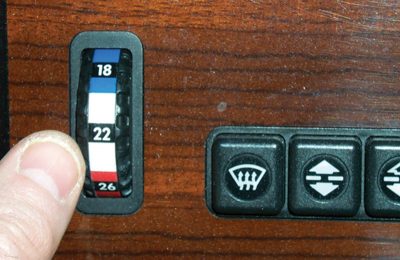
As one of the first automotive manufacturers offering a fully integrated vehicle heating and cooling system, properly described as an automatic climate-control system, Mercedes-Benz has used subsystem mechanisms very similar from one model to another for many model years. Virtually all of the company’s recent cars use variations of this system, with the exception of some early 190’s (Model 201).
This automatic climate control system enables the driver to set the temperature in degrees with the adjustable wheel on the climate control panel (or with LED-setting buttons on some cars), and then he or she need do nothing more to keep the passenger compartment at the desired setting.
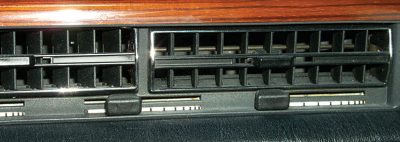
With the controls set to a specific temperature, the system works automatically, that is, it will either heat or air-condition until the temperature of the passenger compartment reaches the set temperature. If the passenger compartment is hot to begin with, the system will air-condition; if the compartment is cold, it will heat; if conditions change in the course of driving (going up or down a mountain, driving through changes in outside weather), the system will adjust what it’s doing to maintain the temperature set.
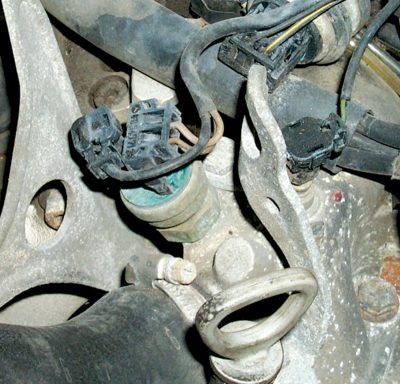
The system determines whether to engage the heating or cooling subsystems and to what extent from various temperature sensors inside and outside the car and in the engine. If the engine coolant is colder than the passenger compartment, the system waits after the driver first starts until the engine warms enough that air blown from the ducts is somewhat warmer than the passenger compartment air. Once coolant temperature crosses that thres-hold, coolant circulates through the heater core, and the blower fan increases its speed. This continues until the interior of the car approaches the temperature set on the control panel. Then the system drops to a temperature-maintenance program, gradually reducing fan speed and setting the heater core to sustain the correct, desired temperature. The exact thresholds and measures to achieve them vary with the model and the year of manufacture, but all work in similar ways.
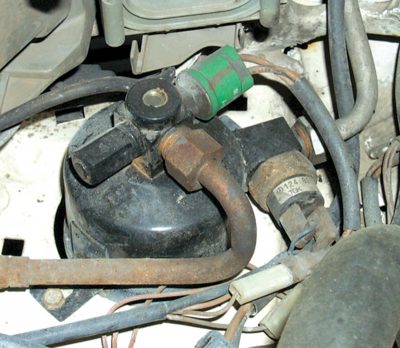
If the driver starts the engine under conditions requiring air conditioning, the compressor engages shortly after the engine idle stabilizes, and the climate control system works to drive the passenger compartment temperature down to the ‘maintenance’ threshold. The control unit cycles the compressor as needed to achieve the set temperature without freezing the air conditioner evaporator. The air conditioning system is an expansion-valve design.
The climate-control system is complicated only because the same controls determine the operation of both the heating and air conditioning systems; the individual subsystems are relatively clear and simple. Fan speed and air door position, as mentioned above, follow the system settings, though the driver can overrule the automatic functions and run the fan at a higher or lower speed as desired (perhaps to increase ventilation). Or he can close the vehicle against outside air in a stretch of very dusty or other undesirable atmosphere by pushing the recirculate button (later models include a cabin filter, cleaning all the entering air). The recirculate setting keeps the same air in the passenger compartment for about half an hour, until the system automatically disengages it. Recirculate allows maximum heating or cooling in the shortest period of time. It is less demanding to control the temperature of a fixed volume of air pumped round and round rather than constantly heating or cooling a new batch drawn in through the inlet. To protect the driver and passengers from any possible reduction in oxygen to breathe, the recirculate door function times out after some minutes. Its objective is to maximize heating or cooling for short periods or to seal the car for a limited travel distance; it does not hermetically seal the passenger compartment like a spacecraft or a submarine.

Later versions of the climate-control system allow different temperature settings for the driver and for the front passenger. In some luxury models, the rear-seat passengers have temperature controls as well. Obviously, these multiple-control variations employ more temperature sensors. Besides temperature inputs, blower speed also depends on vehicle speed: The faster you drive, the lower the voltage the control unit applies to the blower, depending more on ram-air with higher road speed.

Two significant components in the heating system are the “monovalve,†an electrically pulsed water valve on the coolant return line, and the auxiliary electric coolant pump. By cycling this valve, the system can keep the heater core to a specific temperature rather than relying on whatever heat the engine coolant has. By pumping engine coolant through the heater core with the small electric pump, heating performance is constant even when the engine is running slowly or at idle. Systems with separately adjustable temperature for driver and front passenger have a more complex water valve to control the separate halves of the heater core. The more complex valve is called, not surprisingly, the “duovalve.†Each of these water valves is spring-loaded open and closed electrically. Both of these components are simple 12-volt devices easily checked for normal operation in the ordinary ways of measuring continuity, power, ground and voltage drop.
The mono- or duovalve and the electric coolant pump permit a feature you may not have seen before. There is, on most Mercedes-Benz cars, a climate-control button marked REST. This is the German word for residual heat, and it lets you continue to heat the passenger compartment for some time after the engine has been turned off – either thirty minutes or until the coolant temperature falls to a level where it can’t convey any more heat. The electric coolant pump circulates warm coolant from the engine block to the heater core; the water valve remains open; and the blower continues to circulate air, including in the recirculate mode if that button is also pushed. This recovers heat that would otherwise just be lost to the ambient air, without the emissions consequences of leaving the engine idling.
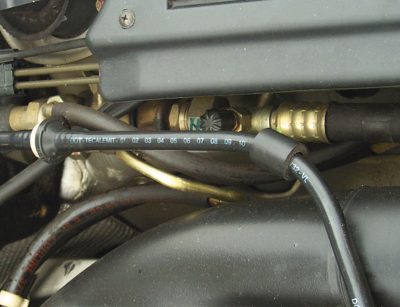
Air conditioning subsystems have used R134a since concerns were first raised about the climatic effects of R12, but the different refrigerant systems work in the same way. Differences correspond to the different refrigerants’ heat-transfer capacities and pressures. Observe all the standard precautions to detect and prevent contamination of the refrigerants, including the air conditioning oils specific to and compatible with each refrigerant, different service fittings and so on. Mercedes-Benz vehicles include a sight glass on the receiver-drier to determine proper refrigerant charge. Keep in mind with R134a there will still be occasional bubbles in the refrigerant even at full charge if, as is likely, you perform air conditioning service in hot weather.
An Approach to Diagnosis
When diagnosing a complaint about the system, be clear how it should work in the first place. Does it heat but not cool, or cool but not heat, or neither? Does the fan blow, or blow but not at variable speeds? Does the vacuum system work the air doors correctly to correspond to the pushbuttons (Reminder: Diesel engines don’t develop intake manifold vacuum naturally; they require separate vacuum pumps. So if a Diesel-engined car has no vacuum-door operation, check that vacuum pump first)? Does the system achieve the set temperature as tested with a thermometer? When you have the complaint and the circumstances under which the problem occurs clear and after you have confirmed that it happens, then consider from your understanding of how the system works what the possible causes of that problem could be. Testing is then the process of eliminating all of those possibilities but the right one, so you can make the correct repair.
Here’s a good first step for any climate-control diagnosis (after confirming the customer’s complaint, of course): Push the defroster button. The system assumes when you push that button, you want the windshield defrosted. Now. As long as the temperature is above freezing, the air conditioning compressor clutch engages; the monovalve stays open; the electric water pump runs; the air doors turn all flow to the windshield ducts; and the fan comes on full speed. Both heat and air conditioning systems work simultaneously. No other setting results in such a busy set of operations in response, so you can check on heating and air conditioning at once. The evaporator condenses some moisture out of the defrost air; the heater core raises the temperature, thus lowering the humidity more. The resulting dry, warm air, blown hard across the windshield, evaporates any condensed moisture from the glass quickly. If everything turns on that’s supposed to in defrost, whatever problem you’re solving has to do with a temperature sensor or the air doors not involved. Naturally, you could still have ordinary problems, like leaves blocking the air intake or A/C condenser, restricted air or coolant flow through the heater core, road grit clogging the condensation drainpipe or an engine thermostat stuck open.
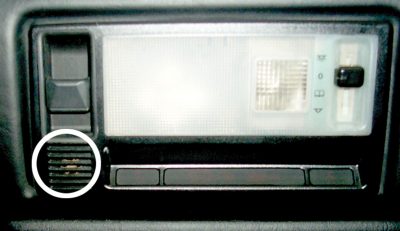
Let’s start with how the climate-control system detects passenger compartment temperature. We’ll take the 300E/124 as typical: A small grate next to the dome/courtesy light fits over a sensor that changes its electrical resistance to correspond to
the temperature of the air. A small tube at the sensor leads through the headliner and down the passenger-side A-pillar and behind the dashboard to a small electric fan that runs anytime the ignition is on. Its function is to circulate air past the sensor to make sure the reading accurately reflects the temperature in the passenger compartment. If there is reason to suspect that sensor is not functioning properly, compare its output with a temperature reading taken by an independent, accurate thermometer adjacent to the sensor’s intake grille. This is also the position at which to take any temperature reading that will determine whether the system can achieve the set temperature determined by the temperature selector wheel on the dashboard panel.
Other sensors detect the engine coolant temperature – if the system is going to use engine coolant to heat the passenger compartment, it has to have information about how warm that is, what its thermal resources are – and the temperature in the heater core.
At the heart of the system is the climate control unit, directly behind the pushbuttons in the dashboard. This includes all the electronics for the system other than relays. It controls the interior temperature and blower speed (Important note: The control unit never applies more than about seven or eight volts to the blower, even for full speed fan operation. If you wire 12 volts to the blower motor directly, you could cause damage to it or to the blower-control resistors).
Heating Side
The system will not circulate warm engine coolant through the heater core unless the system settings and the engine coolant temperature call for it. The monovalve controls the flow of coolant through the heater core, and that valve in turn is controlled by a solenoid – actuated by the climate control system.
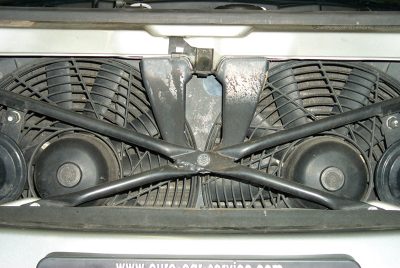
The M-B climate control system has included self-diagnostics since 1988. You need the factory impulse-counter tool or its equivalent to access that information. In the absence of the tool, it is not that difficult to check the components individually to determine what is going on. You can check visually, for example, to see whether the air conditioning compressor engages or not; you can tell by touch or measurement whether coolant circulates through the heater tubes and core; you can check continuity and voltages of the electrical components with a good multimeter. For particularly difficult problems, complete information on any variation of the climate control system is available from Mercedes-Benz.
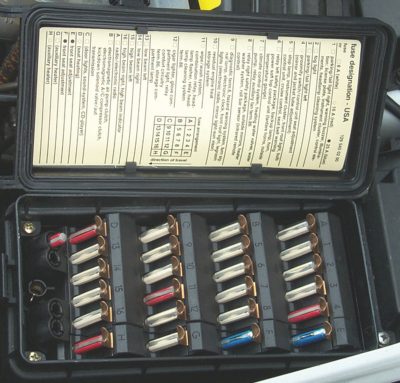
There is a strong tendency to assume that whatever has gone wrong must be something very complex because an automatic climate control system is complex. Not so. The Benz system is just as subject to blown fuses, air ducts or condensers plugged with leaf debris and the like as any other – just check the basic problems first.






0 Comments